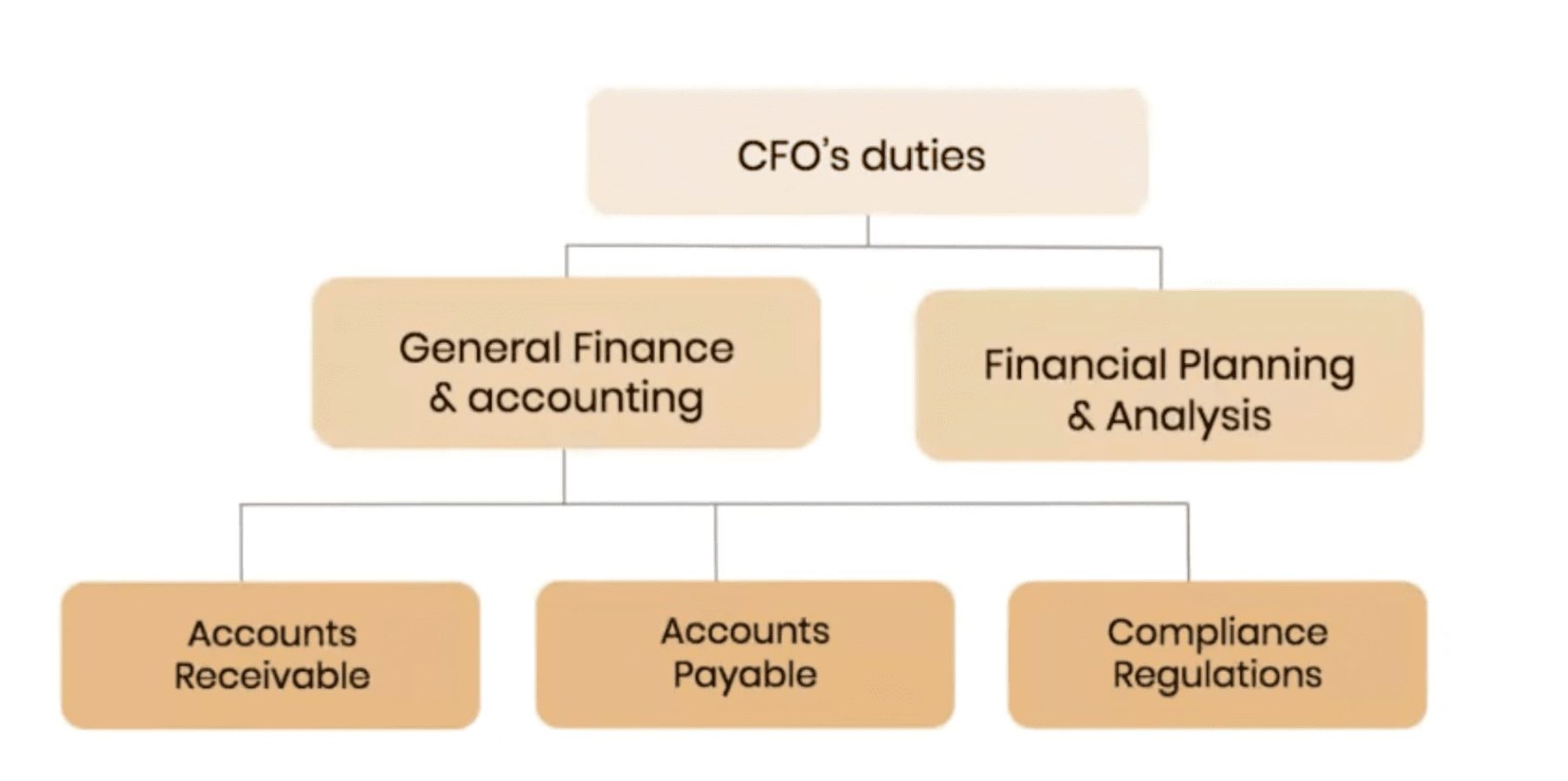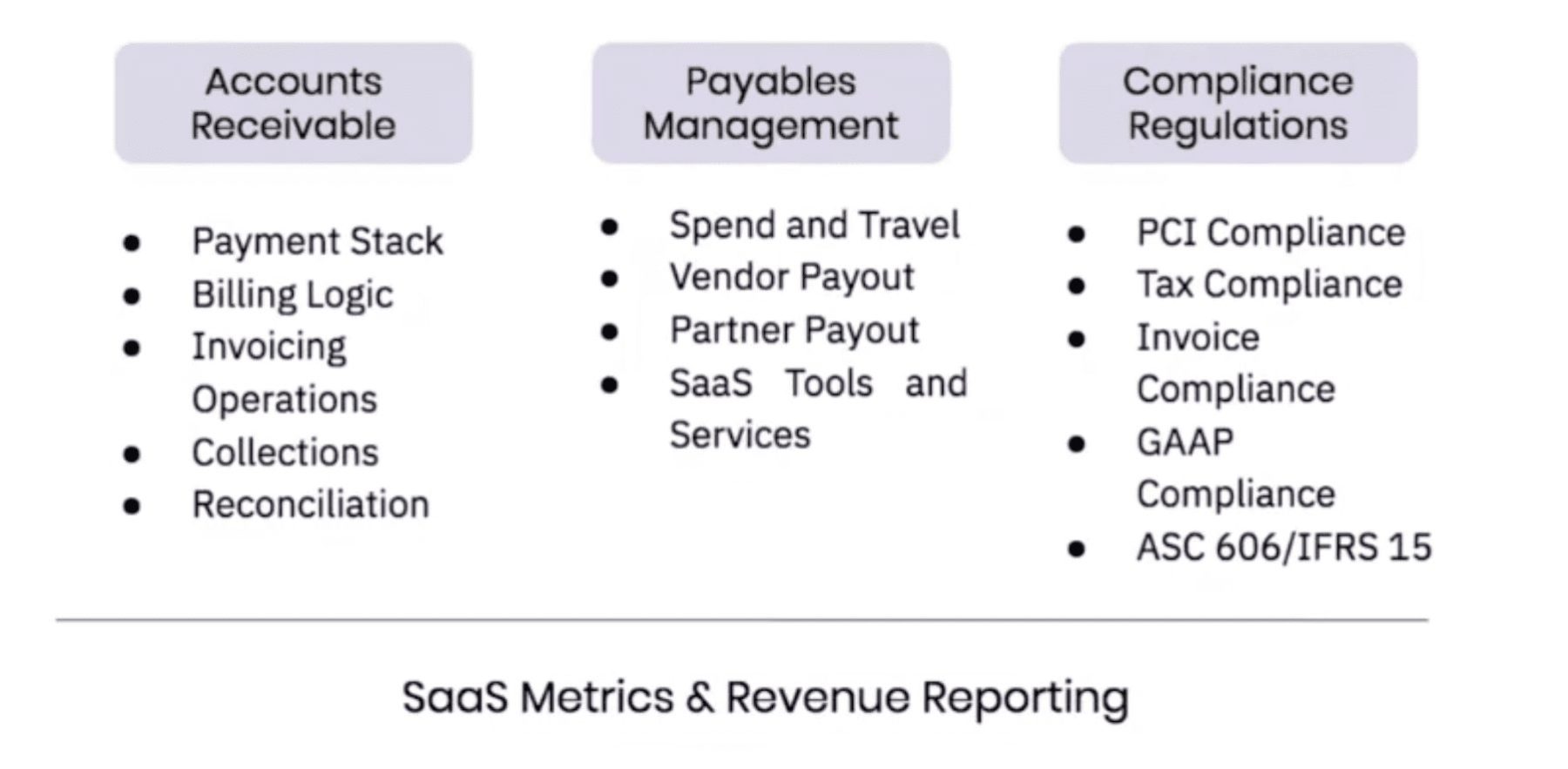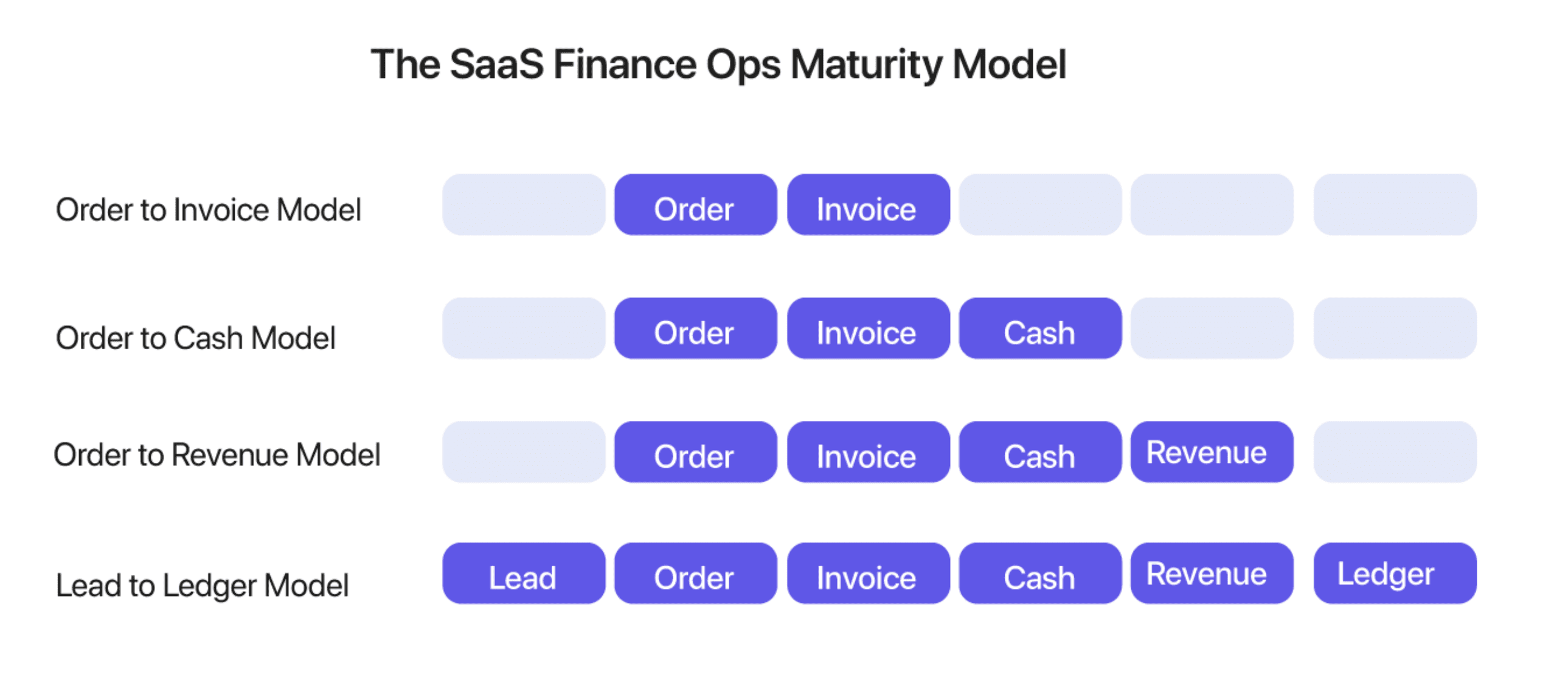As businesses scale, balancing growth and efficiency becomes a key focus area. While growing fast is undoubtedly an advantage, stakeholders and investors also want to know how efficient your unit’s economics are.
Since they are responsible for revenue collection, preventing revenue leakage, and ensuring cost-effective scaling, finance operations are critical to growth and efficiency.
Finops is steadily becoming a mainstream practice in growing SaaS companies. In my previous post, we spoke about the role of a finance controller in a scaling SaaS business and how they directly impact the revenue cycle. We also enlisted key capabilities finance teams should possess in their arsenal to tackle the challenges faced by a growing SaaS.
As finance ops moves from being perceived as a back-office function to a growth accelerator, let’s take a deeper look at what the FinOps function does, why you need it, what an ideal FinOps team looks like, and some best practices.
What is FinOps?
As the name suggests, Finance Operations is a set of processes and technology that help a business streamline its financial operations to achieve efficient growth. FinOps (also known as cloud financial management) plays a critical role in driving financial accountability and accelerating business value with automation.
I know what you’re thinking. That definition covers a lot of ground. Yes, from the lens of a SaaS business, the scope of the Finops practice is wide – cutting across subscription management, spend management, capex management, financial reporting, and financial accounting oversight.
Here’s what the anatomy of the finance ops function looks like for SaaS businesses:

Accounts Receivable: SaaS businesses require a mechanism to generate invoices and map payments against those invoices on a recurring basis. You must also integrate the accounts receivable engine with an accounting solution to facilitate reconciliation.
Accounts Payable: Opposite to what accounts receivables are, accounts payable pertains to handling purchase orders, ensuring payments happen on time, and managing the spend of all tools and services your SaaS uses.
Compliance Regulations: Compliance requirements can vary depending on the nature of your SaaS business and the geographies you serve. For example, PCI-DSS (Payment Card Industry Data Security Standard) is relevant for SaaS businesses that offer card payments. SaaS businesses also have to focus on tax compliance and accounting guidelines like GAAP & ASC 606.

Finance operations teams need to work seamlessly across these three buckets while also keeping a keen eye on important SaaS metrics and Revenue Reporting.
Let’s take a look at the gamut of responsibilities of the FinOps function.
FinOps Roles and Responsibilities
FinOps teams often wear various hats. For SaaS businesses, their roles and responsibilities can be summarized as follows:
Manage Accounting Processes Efficiently
Finance teams regularly deal with activities like managing revenue collections, revenue recognition, and revenue reconciliation. They’re also responsible for ensuring compliance with global tax rules and regulatory guidelines.
SaaS FinOps has its nuances. Subscriptions are easy to upgrade, downgrade, pause, or cancel. SaaS finance processes need to be flexible enough to handle that accurately.
Identify Inefficient Processes and Bottlenecks
FinOps teams play an essential role in plugging revenue inefficiencies and revenue leakage. Inefficiencies are the evil but inevitable byproducts of growth. Operational inefficiencies strike at every step across the revenue lifecycle, starting from demand generation and down to retention, upsells, and revenue recognition. FinOps teams work on streamlining A/R collections and tightening the revenue recovery process. It’s also important to automate finance processes so the teams can spend less time collating metrics and more time strategizing for the future.
Optimize Cost Savings
FinOps teams work on establishing a long-term, cost-effective growth strategy for the business. This includes optimizing expense management capital expenditure while keeping a tight reign on cloud spend.
Implement Robust Reporting
Creating financial forecasts and monitoring the business’s health in real-time with key metrics is an essential responsibility of FinOps teams. Some important SaaS metrics to watch out for are ARR, CLTV, and CAC, as they give a picture of the profitability of the business and the unit economics. It enables benchmarking intelligent decision-making and forms the foundation of long-term business strategy.
Check out our guide on Vital Metrics for a CFO’s Dashboard to know more.
Importance of FinOps for Businesses
At the early stages of growth, the priority for any SaaS is to acquire new customers and retain them. There may not be a full-fledged finance team yet, and spreadsheets may be enough to keep track of your SaaS. However, with growth, finance workflows typically become more complex and susceptible to errors. You need enterprise-like sophistication while still maintaining your agility.
With a multitude of such changes, the workload of SaaS finance teams increases with:
- New policies: What used to be ad-hoc changes in finance workflows now become written policies.
- Global expansion: When the SaaS ventures into new geographies, multiple currencies, and local tax rules emerge.
- Complex financial models: Scaling SaaS companies usually experiment with revenue models and pricing.
And most finance teams end up doing this work manually. That’s a dangerous path to tread because this process is error-prone and eventually leads to revenue leakage.
Enter FinOps.
With an efficient FinOps team, you can standardize your accounting processes with the changing finance landscape, conduct data-backed financial planning, and implement financial governance in cross-functional teams.
Check out our comprehensive guide to FinOps for Strategic Financial Leaders to learn how finance operations can be a growth lever for your SaaS.
How to Build Efficient FinOps Teams?
How do we transform the finance operations team into a well-oiled machine? We have identified three building blocks to help achieve that.
Automation
Automate the repetitive tasks that are eating into the finance teamʼs time and freeing them up for strategic thinking. It would be best if you automated in a way that helps a business evolve seamlessly and implement the following changes:
- Enable data flow between functions when implementing process changes.
- Serve a higher or a mid/downmarket audience while testing or implementing business model changes.
- Comply with privacy, taxation, and accounting regulation changes when expanding globally.
Scalability
Finance ops teams should be able to preempt the requirements for their next stage of SaaS evolution and be equipped for efficiency.
Stage 1: Order to Invoice (<$100K)
This is at the very beginning of the evolution of a SaaS company. FinOps’ critical goals at this stage would be to send recurring invoices and ensure payment collection on time, along with basic bookkeeping. At this stage, automation tools are available at a low cost (or even free). It’s probably the best time to experiment with these tools to see what works best.
Stage 2: Order to Cash (<$1M)
As the volume of transactions increases, SaaS businesses at this stage offer more plans with different pricing models. The critical focus for FinOps at this stage would be to automate the subscription management with all the upgrades, downgrades, and prorations.
Stage 3: Order to Revenue ($1 to $10M)
When a SaaS company reaches this stage, it rapidly expands to new geographies and widens its customer base. The role of finance ops expands to include multi-currency support and tax & payment compliance. Automation at this stage can help recover lost revenue by having a smart dunning mechanism in place.
Stage 4: Lead to Ledger ($10M<)
FinOps’ role starts from when a quote is created and continues till that quote gets converted into an invoice. Not having a sophisticated end-to-end finance ops workflow at this stage can stunt the organization’s growth. Finance operations at this stage also play a crucial role in reducing the gap between revenue forecast and actual revenue.
We have prepared an extensive SaaS FinOps Maturity Model that explains each SaaS’s growth stage, an ideal FinOps workflow at each stage, and how you can prepare for the next phase of growth.

Reporting
The metrics that need to be monitored also need to evolve as your SaaS business.
At the order to invoice stage, tracking standalone metrics such as MRR/ARR will be enough to get a pulse of the business. Your customer base is expanding at the order to cash stage, and retention is the key to growth. So the FinOps team must keep a close eye on the churn metrics and the cash flow to check on the business’ health.
However, as the SaaS business progresses to the Order to Revenue stage, it is essential to consider related metrics. At this stage, you should track LTV, churn rate, expansion MRR, and MRR retention cohorts to see if the business continues to expand thanks to a higher net MRR that makes up for the customer churn.
The FinOps teams play a critical role in minimizing revenue leakages across functions in the last layer of measurement at the lead-to-ledger stage. FinOps teams should go over all the workflows and processes with a fine-tooth comb to spot inefficiencies and leaks. They need to audit everything from the marketing lead sources to discount campaigns. This requires end-to-end visibility from quote to revenue recognition.
What does a modernized SaaS finance operations dashboard look like? It must have revenue reports, dunning reports, geography-wise revenue segregation, and metrics that are key to stakeholders internally and externally. In short, the dashboard ties the product, customer, and revenue information together. The expertise of FinOps practitioners in financial forecasting and reporting can help drive strategy to maximize growth.
Check out Chargebee’s RevenueStory to explore subscription analytics and how they can help you grow.
FinOps Tools and Techstack
While FinOps are directly tied to growth, they’re also ironically the function that has to bear the brunt of growth and expansion. And that’s why you need a scalable FinOps tech stack.
According to David Appel, the Head of Subscriptions & SaaS Vertical at Sage Intacct, a robust tech stack lays the foundation for future growth. They provide the regulatory and reporting framework you need, the data management and automation your teams need, and the flexibility and scalability your business requires. Here are the components of the SaaS FinOps tech stack:
Accounting Software
ERP accounting systems like Xero, NetSuite, and Quickbooks streamline financial information and general ledger. They automate tedious processes such as reconciliation and facilitate consistent information sharing across functions.
AR/AP Management
Managing invoices, refunds, and collections manually is a time-consuming activity and can lead to lost revenue in unpaid invoices and late fees. An accounts receivables and payables management software helps manage unpaid and to-be-paid invoices, identifies at-risk customers, and conducts credit assessments to enable optimum resource allocation.
Tax Management
Tax software like TaxJar takes the pain from compliance with global tax rules. These tools support tax automation across geographies and states, so you don’t have to worry about configuring taxes manually as you scale new markets.
Payroll and Spend management
Spend management and expense tracking tools ensure you have visibility into your expenses across functions to identify and avoid overspending.
Subscription Billing Management & Reporting
Payments and billing directly impact revenue and make your FinOps tech stack a vital cogwheel. Subscription billing management platforms like Chargebee help you automate recurring billing engines and are built with your growth in mind. It integrates with accounting, tax, and CRM systems to become the single source of truth for your revenue intelligence.
FinOps Best Practices
Now that we know what the scope of FinOps is and how you can set it up, it’s also essential to keep these best practices in mind when you are scaling FinOps for your SaaS business:
- Keep a close eye on unit economics and how they affect operational efficiency.
- Drive efficiency without sacrificing flexibility. Agile sophistication is the way forward!
- Develop comprehensive reporting and facilitate information sharing across departments.
- Adopt robust tools and technology that’s growth-ready.
- Step out of spreadsheets and automate time-consuming processes so your teams make room for strategic initiatives.
In Closing
FinOps teams are the heart of your growth engine with revenue intelligence and the right data. With Chargebee, you can simplify your SaaS FinOps to ensure there are no hiccups as you scale. Chargebee helps you by:
- Standardizing your accounting with the changing finance landscape.
- Automate global tax management for every country, state, and city you’re selling in.
- Integrating your finance and revenue management toolkit for accurate revenue recognition and reporting. Check out the complete list of Chargebee integrations here!





